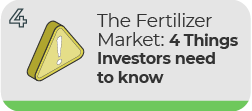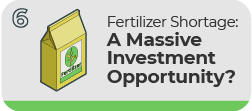
Written By Tessa Di Grandi
Graphics & Design
- Pernia Jamshed
Published June 2, 2023
•
Updated June 2, 2023
•
The following content is sponsored by Brazil Potash

Why is the Amazon Rainforest Important for Food Security?
The Amazon rainforest is home to 400 billion trees and covers 6.7 million square kilometers, but the ‘Earth’s lungs’, as it is commonly referred to, is so much more than that.
Aside from being a key carbon sink, it also plays a critical role in supporting crop growth by stabilizing the climate and balancing water cycles.
In this infographic, our sponsor Brazil Potash looks at how the Amazon regulates rainfall and temperature and how crop yields can be optimized. Let’s dive in.
Rainfall as a Primary Water Source
“Flying rivers” are air currents that carry enormous amounts of water vapor over thousands of kilometers. These airborne rivers are responsible for influencing regional and global weather patterns, including rainfall.
The Amazon flying river cycle begins with water evaporating from the Atlantic Ocean. Wind currents then transport these vapors across the continent, exchanging moisture with the Amazon rainforest through evapotranspiration. Finally, these aerial rivers distribute the moisture as rain.
The trees in the Amazon rainforest release around 20 billion tonnes of water into the atmosphere daily—this is more water than the Mississippi River discharges in 13 months.
Because only around 6% of cropland in Brazil is irrigated, the region relies heavily on this rainfall as a primary water source to support crop growth that feeds both local and global communities.
Temperature Regulation
The Amazon also absorbs billions of tons of carbon dioxide (CO2) a year through photosynthesis. By absorbing this CO2, it helps regulate temperatures and lessen the effects of climate change.According to NASA research, the cumulative effects of climate change, accelerated by deforestation, may result in the loss of up to 11 million hectares of agricultural land in Brazil by the 2030s.
The continued sustainable production of Brazil’s crops is essential to food security, but deforestation can harm these efforts.
How to Grow More With Less
Brazil hosts the largest section of the Amazon rainforest at around 60%. The country is also one of the world’s largest exporters of agricultural goods.
It’s essential for global food security and for climate change that crop yields in Brazil are increased in areas already allocated for agriculture, instead of clearing new areas in the Amazon rainforest.
A recent study highlights a significant yield gap in Brazil’s primary export, soybeans.
A yield gap is the difference between actual crop yield and potential crop yield.
| Region | Yield | Yield Gap |
|---|---|---|
| Cerrado | 62% | 38% |
| Amazon | 69% | 31% |
| Atlantic Forest | 76% | 24% |
| Pampa | 92% | 8% |
The following steps proposed could optimize land usage:
- Increase crop yields: This can be done in part by optimizing and increasing fertilizer use. Local fertilizer suppliers are essential to this by providing affordable and accessible fertilizer year-round.
- Double Crop: Continuing to grow a second crop of corn on soybean fields between seasons to optimize land usage. Additional fertilizer is essential to maintain the soil’s nutrients after harvests.
- Raise cattle on smaller pastures: By streamlining the space provided for cattle, additional cropland can be added to support food for both people and livestock.
The Role of Brazil Potash
Brazil Potash aims to support the preservation of the Amazon rainforest by working with farmers to increase crop yields and improve the quality and quantity of food grown, without the need for land expansion.
By keeping farmers informed of fertilizer’s benefits and supporting a more stable supply of local fertilizer, Brazil Potash will continue supporting farming communities for generations to come.
Click here to learn more about sustainable crop growth in the Amazon and Brazil Potash.

Please enable JavaScript in your browser to complete this form.Subscribe to our free newsletter and get your mind blown on a daily basis: *Sign up
Related Topics: #amazon #crops #food security #Brazil Potash #flying rivers #agriculture #Brazil
Click for Comments
var disqus_shortname = "visualcapitalist.disqus.com";
var disqus_title = "Here's Why the Amazon is So Important for Global Food Security";
var disqus_url = "https://www.visualcapitalist.com/sp/heres-why-the-amazon-is-so-important-for-global-food-security/";
var disqus_identifier = "visualcapitalist.disqus.com-158259";
You may also like
-
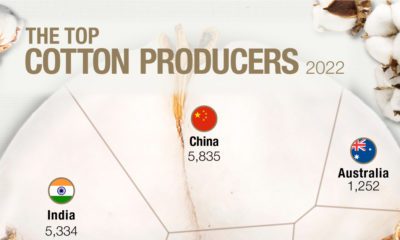
Agriculture6 months ago
Ranked: The World’s Top Cotton Producers
As the most-used natural fiber, cotton has become the most important non-food agricultural product.
-
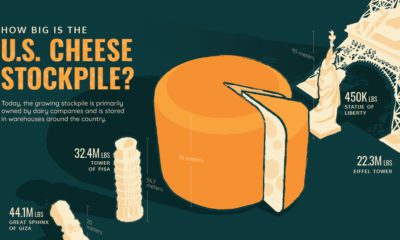
Agriculture7 months ago
How Big is the U.S. Cheese Stockpile?
The U.S. has 1.5 billion pounds of cheese in cold storage across the country—around $3.4 billion worth of cheese.
-
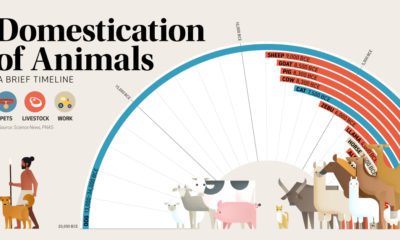
Agriculture11 months ago
Timeline: The Domestication of Animals
This graphic shows a timeline of when 15 different animals became domesticated, based on archaeological findings.
-
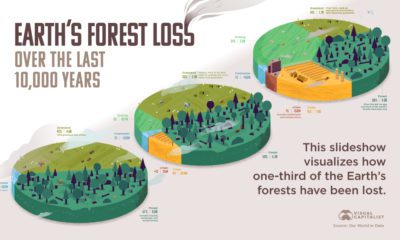
Environment1 year ago
Visualizing the World’s Loss of Forests Since the Ice-Age
How much has the world’s land use changed over the last 10,000 years, and how have forests been impacted?
-
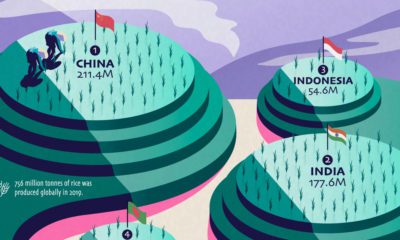
Agriculture1 year ago
Visualizing the World’s Biggest Rice Producers
Over half of the world’s population lives on rice as a staple food, but just a few countries dominate global rice production.
-
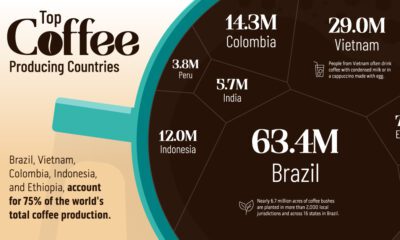
Misc2 years ago
The World’s Top Coffee Producing Countries
Coffee is the third most consumed beverage globally. Here we visualize the countries that have the highest coffee production in the world.
Subscribe
Please enable JavaScript in your browser to complete this form.Join the 380,000+ subscribers who receive our daily email *Sign Up
The post Here’s Why the Amazon is So Important for Global Food Security appeared first on Visual Capitalist.


